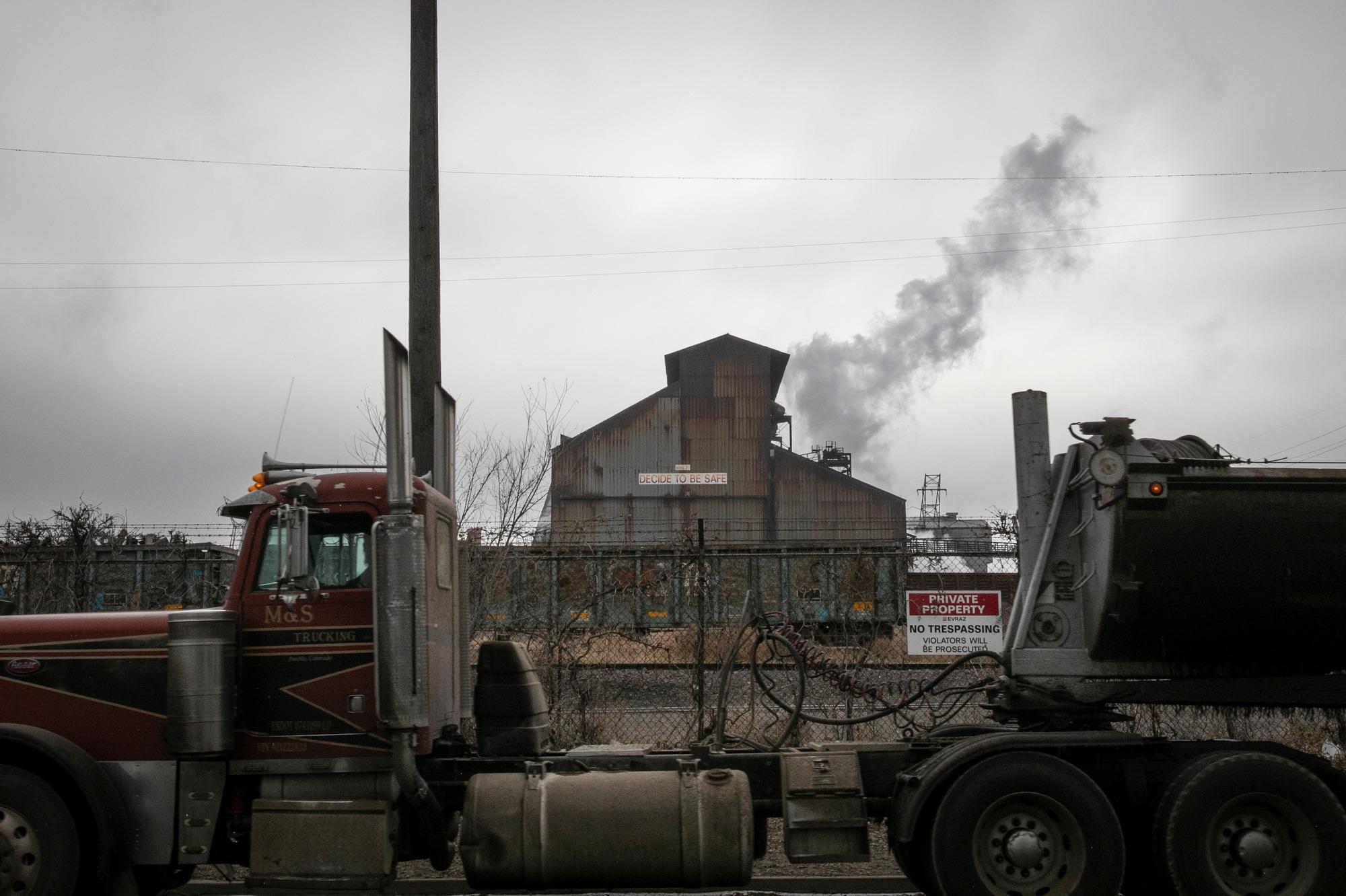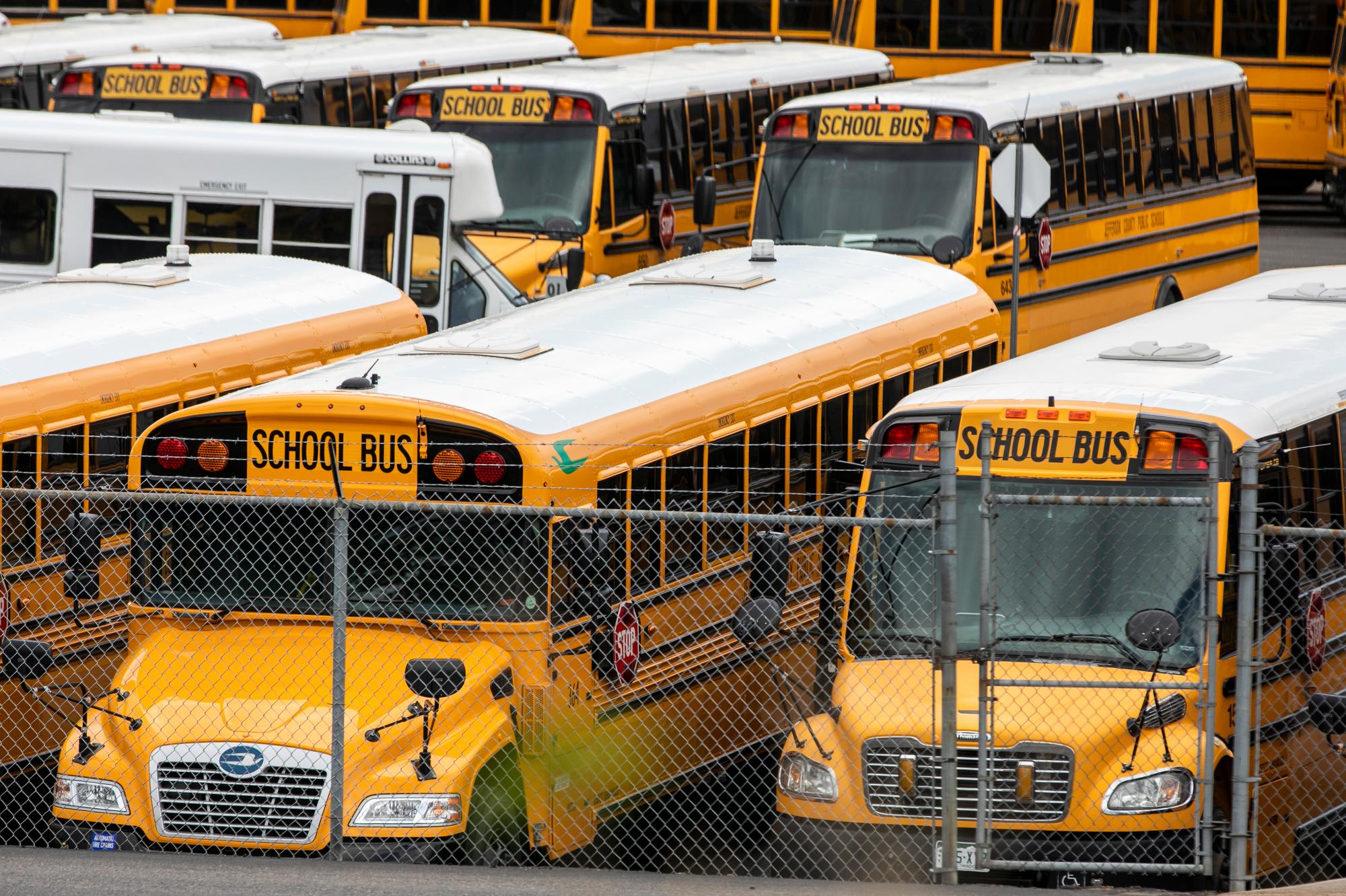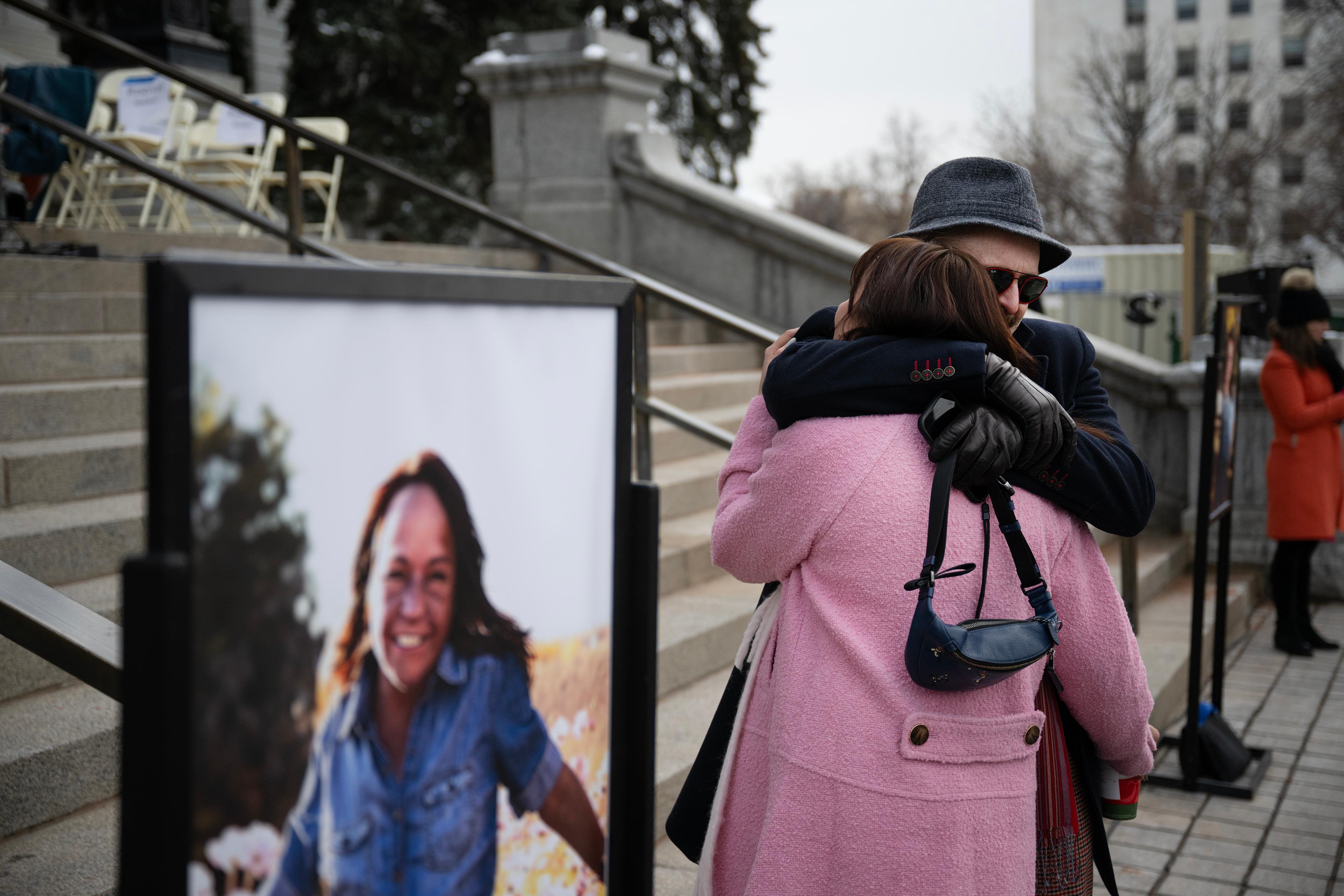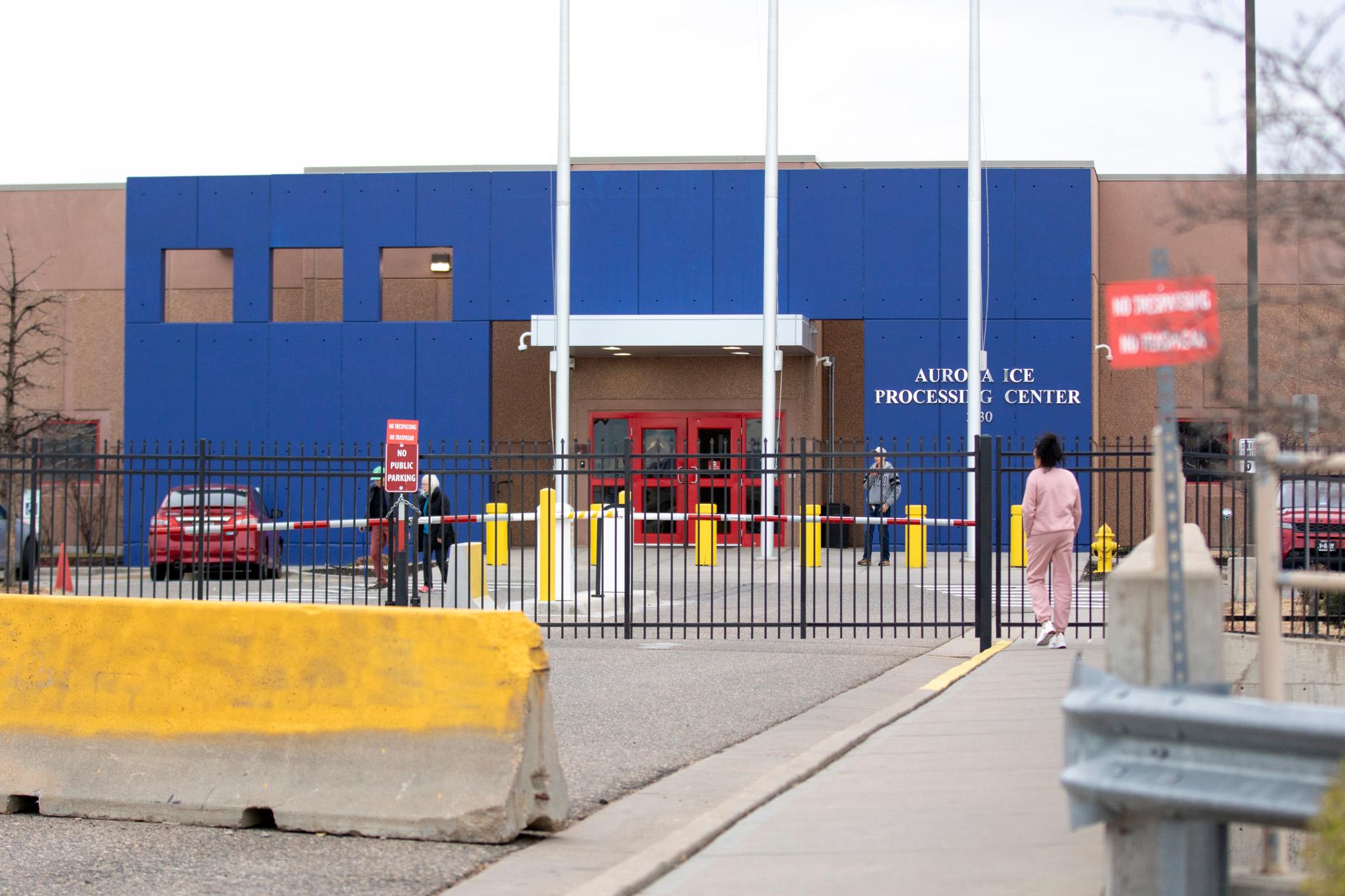
When President Donald Trump recently announced his decision to shrink Utah's Bears Ears National Monument, critics -- including neighboring American Indian tribes -- charged that the real motivation for the move was to open fragile lands to energy development.
- Was It 'Illegal' For Trump To Shrink Utah's Monuments?
- National Monuments In The West Vs. Put Presidential Powers
Interior Secretary Ryan Zinke rejected the claim, saying the decision was "not about energy." But the Washington Post reported recently that a Lakewood-based uranium firm called Energy Fuels Inc. lobbied Zinke's department on the issue last spring. The company owns a conventional uranium processing mill and a mine just outside the original boundaries of Bears Ears.
Energy Fuels' vice president of marketing and corporate development, Curtis Moore, tells Colorado Matters the firm wanted "minor adjustments" to the Bears Ears boundaries. Company officials wrote to the U.S. Department of the Interior last May expressing concerns that operations might be disrupted or limited by the monument's original boundaries. Moore says they aren't interested in mining the uranium and vanadium deposits within the monument.
Five Indian tribes in the area oppose uranium development in Bears Ears. Last week, an official with the Native American Rights Fund in Boulder, who represents three of the five tribes suing the Trump administration, maintained that areas Trump wants to strip from the monument need protection.
Energy Fuels Inc. also plans to open a mine miles from the Grand Canyon south rim in Arizona. On Tuesday, the U.S. 9th Circuit Court of Appeals in San Francisco upheld a lower-court ruling allowing the company to move forward on its plans for the mine, according to Reuters. The Havasupai Tribe, which lives nearby, opposes the mine, saying it endangers their watershed.
Read The Transcript
Ryan Warner: This is Colorado Matters from CPR News. I’m Ryan Warner. The Trump Administration faces a panoply of lawsuits over its move to shrink two national monuments in neighboring Utah including Bears Ears. It was created by President Obama at the request of five American Indian Tribes. Interior Secretary Ryan Zinke has said this is not about energy but the Washington Post recently reported that a uranium firm had lobbied the Interior Department last spring. That company is Energy Fuels Incorporated. It’s in Lakewood and spokesman Curtis Moore joins me. Curtis, welcome to the program. Curtis Moore: Well, thank you very much, Ryan. I appreciate the opportunity. RW: Absolutely. A letter your company wrote to Secretary Zinke when he was asking for input on Bears Ears says; “There are many uranium and vanadium deposits located within the newly created monument that could provide valuable energy and mineral resources in the future.” Did you want Bears Ears to shrink so that you could mine uranium? CM: That’s not exactly an accurate characterization, I would say. So I would say that some of the reports of our influence and our role in this whole process have been wildly exaggerated. RW: But let me say that’s a quote directly from your letter so to the point of whether your company had an interest in mining uranium in Bears Ears. CM: Oh, yes. So what we were doing that letter was actually a comment letter. The Department of Interior was soliciting public comments. There were 2.8 million comments that were actually submitted to the Department of Interior. Ours was one and so what we were doing was we were just trying to provide them with information. We actually don’t own any uranium or vanadium deposits inside what is, or what was formerly Bears Ears. We sought a couple of very marginal adjustments to the boundary of Bears Ears amounting to about one or two percent. I’ll tell you we never asked for an eighty five reduction in Bears Ears. RW: That is, indeed, the reduction that the president announced when he traveled to Utah. You were not looking, you’re saying, for anything near that size. CM: That is correct. RW: Okay. Your firm owns White Mesa, the only conventional uranium Mill still operating in this country and it’s just outside the eastern boundary of Bears Ears and then you have a mine miles from the western boundary and in this letter your company wrote to the administration that there was concern those operations could be disrupted or constrained because of Bears Ears. So you don’t own any minerals in Bears Ears but you are, in that letter, expressing at least the desire to keep those minerals accessible, perhaps, to other companies? CM: No, no, we were just giving them information. RW: Okay. CM: Yeah, and you mentioned – RW: You say there are many uranium, vanadium deposits located that could provide valuable energy and mineral resources in the future. What do you mean by that? CM: Oh, we mean that we want to make sure that they understand that and that if they decide – when they ultimately make the decision about whether or not to reduce Bears Ears it – we’re just providing them with information. So and it’s a fact. It’s a fact there are uranium and vanadium deposits in that region. RW: How do you think the American people benefit if that uranium is mined and processed whether it’s by your company or not? CM: Well, inside of Bears Ears? RW: Or, I suppose, anywhere in the United States. CM: Well, sure. RW: You can speak more generally to the uranium market. CM: Yeah, again, I mean, I would be very doubtful if even without the monument those deposits ever actually get mined. They are there, they exist but they’re actually not very good deposits. But really what uranium does, and that’s what’s kind of funny, it's kind of one of the great American pastimes right now is playing political football with uranium, you know you have the right saying some things, you know Hillary gave away twenty percent of uranium. You now have the left talking about how, now, we're giving all our land to uranium mining companies and both of those are wildly exaggerated again. But what uranium really is, it's the fuel really for clean energy, nuclear energy provides sixty percent of our carbon free, emission free electricity in the United States. RW: There are a hundred or so nuclear power plants in the U.S. CM: Correct. RW: And my understanding is the vast majority of the uranium that fuels them is not mined in the United States? CM: That’s exactly correct. And it’s kind of a difficult situation that we’re in. Most of our uranium in the United States, or a lot of our uranium, almost forty percent, comes from Kazakhstan, Russia, and Uzbekistan. So we don’t believe that that’s a very good situation for our country to be in to have so much of our clean energy basically dependent on Russia. RW: So you think this is about energy independence which is something we’ve heard a lot of in recent years. CM: I would say so and energy security. A lot of our uranium also comes from Canada and Australia. So, but we also need to make sure that we have, I think, a viable nuclear fuel cycle in the United States including uranium mining. We’re actually going to produce this year probably our lowest level of uranium in the United States since 1952. That was the dawn of the nuclear age so our industry has really, really shrunk quite a bit over the last couple of decades. RW: The price of uranium is low though, that’s my understanding so does it make it worth mining in the United States? CM: Well, it is low mainly because of imports from places like Kazakhstan. The price of uranium is low. It’s been dropping and all the way up until just recently Kazakhstan had just been relentlessly increasing production. Their production is state owned. We do believe that places like Kazakhstan and Russia they have sort of larger geopolitical goals. They can use the nuclear fuel cycles just to sort of exert some influence around the world and so they don’t care really what the price is but it impacts us so, yeah, that’s one of the big difficulties we have is low prices. RW: I want to back specifically to Bears Ears so you said that you wanted minor adjustments to its boundaries. What did you mean specifically? CM: So we did prepare a couple of proposals. One was kind of like a small adjustment; one was a “larger adjustment.” The small adjustment would have adjusted the boundaries away from our White Mesa Mill and away from our Daneros Mine. It would have impacted one percent of the previously designated Bears Ears. The “large one" would have impacted about two and a half percent. Basically, what happened was on the Daneros Mine there was an access road that goes to the mine. The mine is off the old monument, or I guess the former monument, but the road, seven miles of the road, went through the monument so – RW: That could have disrupted operations. CM: Yeah, we needed clarification about that. With regard to the mill we have some off-site monitoring stations but then we all of a sudden woke up one day and found out they were inside the monuments so we didn’t think it was appropriate. RW: Now, the letter that your company sent also noted a section of the Antiquities Acts that the president and Secretary Zinke have both cited as well that “The smallest area compatible with the proper care and management of the objects be protected.” So we spoke with Matthew Campbell of the Native American Rights Fund last week about this and his firm represents three of the five tribes suing the administration and he rebuked this idea that the area to be left out don’t need protection. Matthew Campbell: There are certain ancient dwellings and buildings, such as a kiva that are still used by the Pueblos today in their ceremonies. There’s rock art and other rock art formations that were left out that date back since time immemorial and provide certain insights to the tribes about their cultures and who they are. RW: When you suggested even minor changes to Bears Ears did you have that in mind, the tribes’ concerns? CM: Absolutely. We don’t oppose a national monument designation at all. I mean, that’s actually something that’s spreading all over the Internet that this uranium firm lobbied to reduce the boundaries as if we were behind it. No, we support national monument designations. I’d also mention that national monuments are actually not very good vehicles for preserving some of these artifacts that that gentleman mentioned. We have – the problem we have, I’ll honestly say is a lack of funding for trying to protect these artifacts. You can create a national monument but if there’s no funds to actually hire people to go enforce the law; there’s a whole lot of laws out there like the Archeological Resources Protection Act that prevent disruption to some of these sites so that's a – RW: What you’re saying there is that the staffing is a concern but the designation of a monument, you say, that’s not an important step towards protecting these places? CM: It’s one step, it’s one tool in the tool box. You have, like I said, there’s laws out there; you have wilderness study areas, you have areas of special environmental concern. Again, we don’t oppose national monuments but, really if you want to protect this stuff, we need to fund it. That’s the biggest issue. RW: I see. Also in the news, an Appeals Court ruling means that your company can go ahead and open a new uranium mine several miles south of the Grand Canyon in northern Arizona. CM: Correct. RW: This is outside the park but it’s near a major entrance. The nearby Havasupai Tribe opposes this. They’re concerned about contaminated water. Why do you want to open that Canyon Mine in particular? CM: So the Canyon Mine and just for whatever reason, God or whoever, put all of America’s best uranium deposits in Northern Arizona. These are very high grade deposits. The Canyon Mine has about one percent uranium, meaning that for every ton of ore you mine out of this mine, you get about twenty pounds of uranium. There are dozens if not hundreds of uranium deposits, actually inside the Grand Canyon itself. Our CEO likes to say that the biggest miner of uranium in Arizona is the Colorado River. About 130,000 pounds of uranium flows down the Colorado River every year. So, anyway, so we just had our permits upheld for our Canyon Mine and, again this is a bi-partisan issue. We had the Obama Administration, their Forest Service in there, which is under the Department of Agriculture, was on our side in defending these permits from lawsuits – RW: But not the Obama Administration as a whole? CM: Yes. Well, his Department of Agriculture, that’s a cabinet level, absolutely it was. RW: Okay. So the Washington Post pulled Federal Lobbying records which showed that your company paid a firm about $30,000 to lobby on its behalf not just for Bears Ears but other federal policies that might affect your company and your VP of Operations and lobbyists met with some of Secretary Zinke’s advisors on July 17. So is it fair to say that your company has been doing more than just sending letters among the thousands sent? CM: Oh, look, we spent $30,000 over nine months. In the world of DC lobbying that hardly makes us these big time DC power brokers. That’s a fairly small amount of about $4,000 per year. And what we’ve mainly doing is reaching out to administration officials to talk about a whole host of issues. Bears Ears was one minor issue. I’d say the biggest one is this dependence on foreign uranium. RW: In a press conference last week Secretary Zinke said, “Public land is for the public not special interest groups.” How would you respond to someone who says, “Well, uranium is a special interest?” CM: Well, we agree. When you’re talking about BLM land, when you’re talking about Forest Service Land, it’s managed under a multiple use doctrine, right, and that includes recreation, it includes sight-seeing, it includes environmental protection, it includes mining, it includes forestry and it includes grazing so that’s – RW: You’re one of many special interests. You’re a special interest. CM: We are. RW: There are hundreds of abandoned uranium mines on or near the Navajo Nation Reservation and they’ve been deemed Super Fund sites. The EPA set aside billions of dollars for these mines but they still haven’t been cleaned up and this letter that your company sent to the Interior Department in May references these mines saying that you, perhaps, could help with the cleanup. Very quickly explain how? CM: Absolutely, we are standing ready to try to help with this cleanup. As the modern uranium mining industry that we are we recognize that the history of our industry back in the ‘40s, the ‘50s, and the ‘60s created many environmental problems, it created many health problems and so we want to be a part of the solution of cleaning those up. The Navajo Reservation holds up to over 500 of these old sites and our White Mesa mill is, actually a very good location off the reservation where some of that material could go and so we’ve been trying to talk to the EPA about this. I think it’s a travesty that those sites have not been cleaned up by the government. It’s their responsibility so – RW: So this remains an offer not a done deal? CM: Correct. RW: Curtis, thanks so much for being with us. We really appreciate it. CM: Well, really appreciate it, thanks for the opportunity to talk to you. RW: Curtis Moore is with Energy Fuels, Incorporated in Lakewood. They run a uranium processing mill and mine, both, just outside the original boundaries of Bears Ears National Monument in Utah. This is Colorado Matters from CPR News. |









